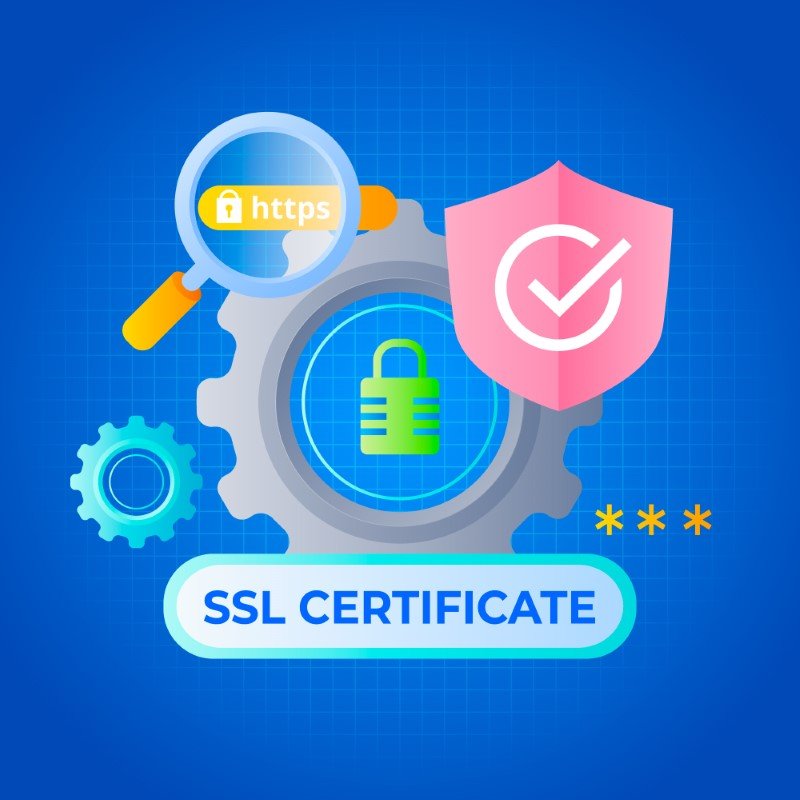In today’s digital age, small businesses are increasingly at risk of cyber-attacks, making vulnerability assessment an essential pillar of any robust cybersecurity strategy.
Understanding and implementing effective vulnerability management practices can mean the difference between a secure online presence and becoming a target for malicious actors. Through vulnerability scanning and security testing, weaknesses can be identified before they are exploited, ensuring your business’s cyber defenses remain strong.
This article aims to demystify the process and importance of vulnerability assessments for small business websites, offering actionable insights into enhancing your cybersecurity posture.
We will explore what vulnerability assessment entails, including the common vulnerabilities This segment delves into the challenges that small business websites face and provides a step-by-step guide to conducting your own vulnerability tests. Additionally, we will discuss the significant aspects of choosing a vulnerability assessment partner that can aid in implementing a comprehensive vulnerability assessment framework, tailored to your business needs. From vulnerability scanning to security vulnerability testing, this article will provide a roadmap to boost your website’s security, ensuring you’re well-equipped to check the vulnerability of your website and take necessary actions towards effective vulnerability management.

Table of Contents
Understanding Vulnerability Assessments
Definition and Importance
Vulnerability assessments are crucial security measures that help identify potential weaknesses within your organization’s IT infrastructure. These assessments provide a high-level overview of your security posture and pinpoint areas that require attention. For small businesses, setting up a strong security framework that includes regular vulnerability assessments is vital. This proactive approach helps in finding and addressing security vulnerabilities, ensuring a robust defense against potential threats. Addressing these vulnerabilities before they can be exploited by cybercriminals is crucial, potentially saving your business from significant financial losses and damage to its reputation.
Vulnerability Assessment vs. Penetration Testing
While vulnerability assessments involve scanning for weaknesses, penetration testing goes a step further by simulating real-world attacks to test the effectiveness of security measures. Deciding between the two depends on the depth of analysis you require. Vulnerability assessments are generally more cost-effective and provide a broader risk assessment, whereas penetration tests are more detailed, higher in cost, and should be conducted less frequently. Combining both approaches, known as Vulnerability Assessment and Penetration Testing (VAPT), is considered best practice for achieving comprehensive security.
Why Small Businesses Need to Conduct Vulnerability Assessments
Small businesses are often targets for cybercriminals due to perceived weaker security measures. Neglecting vulnerability assessments can leave your business exposed to a range of security threats, including data breaches and ransomware attacks, highlighting the importance of regular checks.. Regular vulnerability assessments enable small businesses to stay updated on potential security risks and take timely action to address them, ensuring ongoing protection against emerging threats.This ongoing process not only helps in protecting your business from immediate threats but also aids in maintaining compliance with industry standards and safeguarding your business’s future.
By understanding the importance of vulnerability assessments and integrating them into your cybersecurity strategy, you can significantly enhance the security and resilience of your small business.
Common Vulnerabilities in Small Business Websites
Software Vulnerabilities
Software vulnerabilities, particularly those related to outdated or misconfigured systems, present significant risks to small business websites. A common issue is the presence of such vulnerabilities, underscoring the need for regular updates and careful configuration. security misconfigurations Misconfigurations, which can occur at any level of web applications, including the web server, database, and custom code, can lead to unauthorized access and data breaches. For instance, using default configurations and poor password protection are frequent oversights that expose business websites to attacks.
Moreover, the lack of regular updates contributes to vulnerabilities. Outdated software may contain unpatched flaws Web applications face threats that hackers can exploit using code injection attacks. Ensuring that your systems are up-to-date is crucial to defending against these threats, as updates often include patches for newly discovered vulnerabilities.
Configuration Errors
Configuration errors are a major source of security weaknesses in various systems. They can range from incomplete temporary setups to insecure default configurations that have never been modified. Such errors often result from a lack of visibility in cloud platforms, software, applications, networks, and servers, leading to misconfigurations and increased risk, underscoring the importance of risk management.
One notable example of the impact of configuration errors is the breach involving a major financial institution, highlighting how these errors can lead to significant security incidents.misconfigured firewall allowed unauthorized access to sensitive data. Similarly, cloud misconfigurations have led to significant data leaks This includes incidents such as the exposure of nearly 400 million personal records due to a service provider’s error.
The Impact of Human Error
Human error is another critical vulnerability Configuration errors pose significant cybersecurity threats for small business websites, accounting for a substantial percentage of cybersecurity breaches. These errors can range from misdirected emails to failing to apply critical software patches, leaving the network vulnerable to cybercriminals.
Creating a security-focused culture and providing regular, engaging training on cybersecurity best practices are essential steps in mitigating the risks associated with human error. This training should cover security awareness, including recognizing phishing attempts, using strong, unique passwords, and understanding the importance of software updates and security policies to prevent potential breaches.
By addressing software vulnerabilities, configuration errors, and human error, small businesses can significantly enhance their cybersecurity posture and protect themselves from the growing threat of cyberattacks.
Step-by-Step Guide to Conducting a Vulnerability Assessment
Asset Discovery and Inventory
Asset discovery is the first crucial step in conducting a vulnerability assessment. It involves identifying, categorizing, and documenting all the assets within your organization’s digital ecosystem, such as software applications, virtual machines, databases, and IP addresses. This process provides a comprehensive view of your organization’s assets, essential for effective asset management and improved security. Regularly updating your asset inventory is vital as it helps in identifying new services and changes to existing assets that could pose a risk.
Choosing the Right Tools and Services
Selecting appropriate vulnerability management tools is pivotal for small and medium-sized businesses (SMBs). Tools like Snyk, Tenable Nessus, Intruder, Wiz, and Orca offer various features suited to different business needs and can greatly enhance your security posture. For instance, Snyk is ideal for businesses using open-source libraries due to its integration capabilities and automated fix features, while Tenable Nessus provides comprehensive scanning and real-time monitoring suited for in-depth vulnerability assessments.
Scanning for Vulnerabilities
Once the right tools are in place, the next step is vulnerability scanning. This involves setting up the scanner, configuring the settings based on your specific needs, and running scheduled scans to identify vulnerabilities. It’s essential to use tools that can automate this process to save time and ensure that no critical hosts are overlooked.
Analyzing the Results and Prioritizing Fixes
After scanning, the next step is to analyze the results and prioritize fixes. This involves reviewing the vulnerabilities detected, assessing their severity, and prioritizing remediation efforts based on the risk they pose to your organization. Employing a risk management approach helps in focusing on the most critical vulnerabilities first, ensuring efficient use of resources.
Implementing Fixes and Verifying
The final step in the vulnerability assessment process is implementing the necessary fixes and verifying that they have been effective. This includes applying patches, making configuration changes, and then rerunning the scans to ensure that the vulnerabilities have been adequately addressed. Regular rescans are crucial to confirm that all fixes have been implemented correctly and to identify any new vulnerabilities that may have emerged.
By following these steps, you can ensure a thorough and effective vulnerability assessment, significantly enhancing your organization’s cybersecurity posture.
Choosing a Vulnerability Assessment Partner
Understanding Vendor Credentials
When selecting a vulnerability assessment partner, it’s crucial to evaluate the credentials of potential vendors carefully. Look for vendors whose security engineers have recognized certifications such as Certified Information Systems Security Professional (CISSP) or Offensive Security Certified Professional (OSCP). These certifications are indicators of a professional’s expertise and commitment to the field of cybersecurity. Additionally, assess the vendor’s experience in your specific industry. A vendor with a history of successfully securing businesses similar to yours will likely understand the unique challenges and vulnerabilities your business faces.
Evaluating the Scope and Scale of Services
A thorough understanding of the services offered by a vendor is essential. Ensure that the vendor can provide a comprehensive vulnerability assessment methodology, including the steps they will take and the deliverables you can expect at the end of the process.comprehensive description of their vulnerability assessment process This includes verifying that the vendor has the capability to perform assessments that align with any specific compliance requirements your business may have, such as PCI DSS or HIPAA. This ensures that the vendor’s services are not only comprehensive but also tailored to meet your legal and operational needs.
Cost Considerations and Transparency
Cost is a significant factor when choosing a vulnerability assessment partner. Some vendors may offer fixed-fee structures while others might charge based on the time spent. Understand the pricing model and seek clarity on vulnerability assessment as a service to budget effectively and avoid unexpected expenses. any potential hidden costs Transparency from the vendor about all costs involved allows you to budget effectively and avoid unexpected expenses. It’s also wise to compare the cost against the value of the services provided. Opt for a vendor that offers a good balance of comprehensive service and reasonable pricing, ensuring you receive value for your investment.
Ongoing Support and Consultation
After the initial assessment, the relationship with your vulnerability assessment partner should not end. Ongoing support and consultation are crucial as new vulnerabilities and threats emerge. Evaluate the vendor’s policy on providing continuous monitoring and whether they offer services like regular rescans or updates to the vulnerability management process. A vendor that offers ongoing consultation can help you adapt to new threats and maintain a robust cybersecurity posture over time.
By carefully considering these aspects—vendor credentials, service scope, cost, and ongoing support—you can choose a vulnerability assessment company that not only meets your current security needs but also supports your business’s long-term cybersecurity strategy.
Conclusion
Understanding and implementing a comprehensive vulnerability assessment is crucial for protecting small business websites from potential cyber threats. Our journey through this article has illuminated the critical aspects of vulnerability assessments, from recognizing common vulnerabilities and human errors to undertaking a step-by-step process that fortifies your site’s defenses. Emphasizing the significance of this proactive measure cannot be overstated—it equips businesses with the necessary knowledge and tools for risk mitigation, ensuring the longevity and security of their online presence.
In navigating the complexities of cybersecurity, choosing the right partner for conducting a vulnerability assessment program can decisively impact your business’s ability to withstand cyber threats. It’s essential for small businesses to engage in regular assessments to remain vigilant against evolving threats. As we aim to make cybersecurity more accessible for beginners, reflecting on these steps and guidelines offers a foundation from which businesses can build a secure digital environment.
For those seeking professional evaluation, vulnerability assessment services THE ZOH’s Website vulnerability assessment service provide tailored solutions to help secure your digital assets effectively. Moving forward, it’s crucial for small businesses to continuously adapt their cybersecurity strategies, ensuring they stay ahead of threats and protect what they’ve worked so hard to build with vulnerability assessment solutions.
FAQs
To conduct a network vulnerability assessment effectively, follow these eight critical steps: begin with risk identification and analysis, establish scanning policies and procedures, choose the appropriate type of vulnerability scan, set up the scan parameters, execute the scan, assess the risks involved, and finally, interpret the results to inform security improvements.
The vulnerability assessment process is continuous and comprises four main phases: identification of vulnerabilities, prioritization based on risk level, remediation of identified vulnerabilities, and reporting. These stages are crucial for maintaining a robust vulnerability management strategy, as vulnerabilities represent flaws in the system that could potentially be exploited to gain unauthorized access. This cycle ensures thorough vulnerability identification, effective vulnerability remediation, and comprehensive vulnerability reports.
A thorough website vulnerability assessment can be conducted using the following methods: optionally start by finding subdomains to understand the full scope of your attack surface, identify virtual hosts if applicable, run a TCP port scanner to detect open ports, utilize vulnerability scanning software to find vulnerabilities, perform a password audit to check for weak passwords, use OpenVAS for network vulnerability scanning, and optionally check SSL/TLS configurations for secure communications.
The vulnerability management lifecycle encompasses six stages, starting with Stage 0: Planning and preparation, followed by Stage 1: Asset discovery and initial vulnerability assessment. Stage 2 involves prioritizing vulnerabilities based on their potential impact. Stage 3 is dedicated to resolving identified vulnerabilities, while Stage 4 focuses on verification and ongoing monitoring of the security posture. Finally, Stage 5 involves reporting on the findings and implementing improvements based on the insights gained, ensuring a comprehensive approach to vulnerability identification, remediation, and reporting.
Get Your Website Free Audit Report Today!
Newsletter
Latest Post

SEO Optimization Companies: Best Picks for 2024

Web Application Basics: Everything You Need to Know


Small Business Bookkeeping: Essential Tips for 2024


